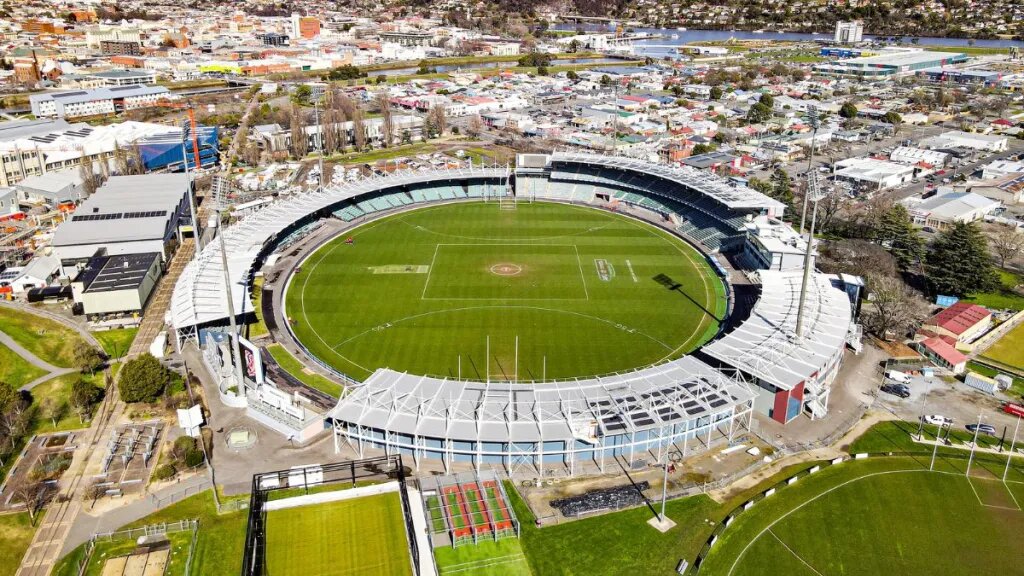The Collingwood Nightmare: A Dark Turn of Events
In the heart of Melbourne, where the spirit of Australian Rules Football pulses strongest, the Collingwood Football Club stands as an institution woven into the fabric of the community. Known for its passionate supporters and storied history, Collingwood’s reputation has been forged in triumph and heartbreak. However, as the 2024 season unfolded, fans found themselves facing a nightmare scenario that threatened to unravel the very essence of their beloved club.
The season had started with promise. Under the leadership of their charismatic coach, the Magpies were riding high after a series of impressive wins. Players were in form, and the atmosphere at the MCG was electric. Yet, beneath the surface, troubling signs were beginning to emerge. Rumors circulated about internal discord, whispers of tensions between management and the playing group, and a concerning lack of cohesion that was palpable in training sessions.
As the weeks progressed, the situation worsened. Key players began to suffer injuries—first, a star midfielder went down with a knee injury, then a crucial defender followed suit. The depth of the squad was being tested, but the true nightmare loomed just beyond the field.
In a shocking turn of events, the club was rocked by a scandal involving several players. Late one Friday night, after a routine training session, a few members of the team were caught in an altercation that spiraled out of control. It began as a disagreement over training strategies but escalated quickly, leading to public accusations of bullying and intimidation within the group.
The fallout was immediate and devastating. Videos of the incident surfaced on social media, and the hashtag #CollingwoodNightmare began to trend. The once-united front of the team splintered under the scrutiny of the media and the disillusionment of fans. Rumors of fractures within the playing group reached fever pitch, with anonymous sources alleging that cliques had formed and that locker room morale was at an all-time low.
As the media storm raged on, Collingwood’s reputation took a hit. Pundits weighed in, fans expressed their outrage, and former players shared their concerns about the club’s culture. The leadership team was placed under intense pressure to respond. Statements were issued, but they often felt hollow, and the community’s trust began to erode.
The board convened emergency meetings, and the head coach found himself in a precarious position. Could he manage the internal crisis while keeping the focus on the game? The question lingered in the air: would the club survive this turmoil, or was this the beginning of a deeper, more systemic issue?
As the drama unfolded, Collingwood’s performance on the field began to suffer. The once-promising season devolved into a series of lackluster performances, with players appearing disinterested and disconnected. Losses piled up, and the gap between the club and its supporters widened. Fans who once filled the stands with pride now expressed their frustrations, chanting for change and accountability.
Rumors of potential trades and player departures swirled, further unsettling the environment. The prospect of losing key players to rival clubs loomed large, compounding the uncertainty. With each loss, the stakes rose, and the pressure on management to rectify the situation became unbearable.
Just when it seemed the club was on the brink of collapse, a small flicker of hope emerged. A veteran player, known for his leadership both on and off the field, stepped up. He organized a players’ meeting, calling for unity amidst the chaos. This gesture, though simple, resonated deeply within the group. Slowly, the players began to engage in open dialogue, addressing grievances and clearing the air.
This pivotal moment marked a turning point for Collingwood. It signaled a shift from finger-pointing and blame to collaboration and mutual support. As the team began to mend its internal rifts, the performances started to improve, albeit slowly. The players rediscovered their love for the game and each other, rekindling the bond that had once made them a formidable force.
By the end of the season, while Collingwood did not make the finals, they had emerged from the ashes of their nightmare. The experience served as a harsh lesson in the importance of communication, accountability, and the value of a cohesive team culture. Supporters rallied around the team, recognizing the resilience displayed in the face of adversity.
The club took proactive steps to address the issues that had come to light, implementing new policies aimed at fostering a more inclusive and respectful environment. Workshops on mental health and teamwork became part of the team’s regular routine, ensuring that the nightmare would not be repeated.
As the 2025 season approaches, the Magpies stand at a crossroads. The scars of the previous year serve as a reminder of what they overcame, but also of what they must avoid in the future. With a renewed sense of purpose and a commitment to learning from their past mistakes, Collingwood aims to reclaim its place as one of the elite clubs in the league.
The road ahead will not be easy, but the Magpies’ journey through their worst nightmare has forged a stronger, more resilient team. Fans, once shaken, now stand united, ready to support their club through thick and thin. The Collingwood Football Club, after enduring its darkest hour, looks towards a brighter future with hope and determination, embodying the very spirit that has defined them for generations.



